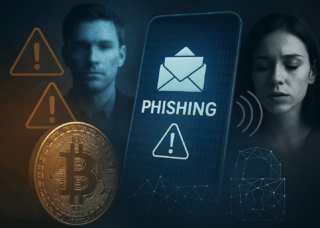Conducting a bug sweep involves identifying and removing hidden surveillance devices such as cameras and microphones to ensure your privacy and security. The professionals who conduct bug sweeps are usually experienced in Technical Surveillance Countermeasures (TSCM) and might include private investigators, security consultants, or firms specializing in counter-surveillance services. These experts use specialized tools to detect and neutralize eavesdropping threats.
If you suspect your home or office might be compromised, hiring a TSCM professional can provide peace of mind. Their expertise ensures that even the most sophisticated spying devices are discovered and dealt with, protecting your sensitive information. Knowing who to contact and what to expect during a bug sweep can significantly enhance your sense of security.
Whether you’re a high-profile individual or simply value your privacy, understanding the scope of bug sweeping services is crucial. Take the necessary steps to safeguard your environment against unseen threats.
Overview
- Bug sweeps help detect and remove hidden surveillance devices.
- Professionals like TSCM experts and private investigators conduct these sweeps.
- Hiring a bug sweeper can enhance your privacy and security.
Understanding Bug Sweeps
Bug sweeps are professional services that identify and eliminate unauthorized surveillance devices in your environment. These sweeps are vital for protecting your privacy and ensuring that conversations and activities remain confidential.
What Is a Bug Sweep?
A bug sweep involves the thorough inspection of your home, office, or vehicle to locate and neutralize hidden surveillance devices. Specialists use advanced equipment such as spectrum analyzers and non-linear junction detectors to find devices like hidden cameras, audio bugs, and GPS trackers.
Most bug sweeps are performed by licensed private investigators or specialized security firms. Routine bug sweeps are recommended for those concerned about corporate espionage or personal privacy breaches.
Types of Surveillance Devices
Surveillance devices can be classified into various types, each designed for specific eavesdropping purposes. Audio bugs monitor conversations and can be concealed in everyday items such as pens or power outlets. Video bugs include hidden cameras that provide visual spying, often placed discreetly in smoke detectors or clock radios.
Some electronic devices used in surveillance also combine both audio and video capabilities. More advanced surveillance tools like GPS trackers are commonly found in vehicles, offering real-time location tracking. Understanding these devices and their functionalities is crucial for an effective bug sweep.
Professionals Who Conduct Bug Sweeps
Those who perform bug sweeps are often specialized experts who possess a blend of technical skills, industry knowledge, and cutting-edge equipment. These professionals include licensed private investigators, TSCM specialists, security consultants, and government agencies.
Licensed Private Investigators
Licensed private investigators often conduct bug sweeps as part of their broad service offerings. These professionals are equipped with the necessary licenses and training to legally carry out surveillance detection tasks.
You may hire them for private, corporate, or legal needs. They use tools such as RF detectors, thermal imaging cameras, and spectrum analyzers. Their work ensures that your confidential spaces are free from eavesdropping devices.
TSCM Specialists
Technical Surveillance Countermeasures (TSCM) specialists are experts specifically trained to identify and neutralize surveillance threats. They focus solely on locating and disabling hidden electronic devices.
TSCM specialists utilize advanced technology including spectrum analyzers, non-linear junction detectors, and other sophisticated equipment. They often work with corporations, high-profile clients, and government agencies to protect sensitive information from potential breaches.
Security Consultants
Security consultants often include bug sweep services as part of their comprehensive security assessments. They offer expert recommendations on improving security measures and help implement solutions tailored to client needs.
These consultants are skilled in identifying vulnerabilities within your environment. They can perform regular bug sweeps to ensure ongoing security. They also provide guidance on best practices to maintain a secure, bug-free space.
Government Agencies
Government agencies often employ specialized units to conduct bug sweeps for national security purposes. These units are typically part of intelligence agencies, law enforcement, or military divisions.
The professionals in these units are highly trained in TSCM services and utilize state-of-the-art technology. Their goal is to protect government facilities and personnel from espionage and unauthorized surveillance. Their work is critical to maintaining national security and safeguarding classified information.
Scope of Bug Sweeping
Bug sweeping is essential for detecting unauthorized surveillance devices in various environments. Different scenarios, such as homes, offices, and vehicles, may require specialized approaches to ensure privacy and security.
Residential Bug Sweeps
Residential bug sweeps focus on identifying hidden devices in homes. These sweeps aim to locate microphones, cameras, or other electronic eavesdropping tools that might compromise your privacy. Private investigators use advanced tools like electromagnetic field (EMF) scanning and thermal imaging to detect hidden devices. Regularly conducting sweeps can help protect against unwanted intrusion and maintain personal security.
Common areas for inspection:
- Bedrooms
- Living rooms
- Home offices
Your premises should be thoroughly examined, including furniture, electrical outlets, and personal items. Electronic devices like mobile phones and computers are also checked to ensure they are not compromised.
Corporate Bug Sweeps
Corporate bug sweeps target offices, boardrooms, and other business environments. These sweeps are crucial to protect against corporate espionage. Unauthorized devices can capture sensitive communications, trade secrets, and confidential meetings.
Key areas for inspection:
- Conference rooms
- Executive offices
- Shared spaces
Trained professionals use both physical and electronic methods to detect and neutralize threats. They might employ spectrum analyzers, non-linear junction detectors, and other specialized equipment. Ensuring the security of corporate data and communications is vital for any business.
Vehicle and Asset Sweeps
Conducting bug sweeps on vehicles and other assets is crucial for individuals who may be targets of tracking or surveillance. Surveillance devices can be hidden in cars, trucks, and other mobile assets, allowing unauthorized parties to track movements and gather sensitive information.
Focus areas for vehicle sweeps:
- Under the chassis
- Inside the dashboard
- Personal items within the vehicle
Professionals inspect both the exterior and interior of the vehicle. They use tools like RF detectors to scan for hidden transmitters and other surveillance devices. Regular sweeps can help ensure your privacy and avoid potential threats while traveling or transporting valuable goods.
Bug Sweep Techniques
To effectively uncover hidden surveillance devices, professionals utilize various bug sweep techniques, including electronic analysis, physical inspection, and thermal and RF spectrum analysis. Each method targets different types of eavesdropping devices and employs specific technologies to enhance the detection process.
Electronic Analysis
Electronic analysis involves using specialized equipment to detect wireless signals commonly emitted by hidden devices. Signal detectors and spectrum analyzers are instrumental in this technique. These tools scan the electromagnetic environment to identify unusual or unauthorized signals.
Professionals often use advanced technology such as non-linear junction detectors to locate electronic components that might not be transmitting signals but are still capable of spying. Additionally, power line analyzers examine the electrical wiring to detect any unauthorized devices connected to the power grid.
Physical Inspection
During a physical inspection, you meticulously search the area for any unfamiliar or suspicious objects. This involves checking common hiding spots such as smoke detectors, electrical outlets, light fixtures, and even furniture. Often, physical sweeps are conducted in a grid pattern to ensure thorough coverage.
Attention to detail is crucial in a physical search. You need to look for small holes, unusual wiring, or out-of-place items that may conceal cameras or microphones. The use of tools like multimeters helps in detecting hidden wiring within walls and objects.
Thermal and RF Spectrum Analysis
Thermal and RF spectrum analysis uses advanced imaging and signal detection to locate hidden devices. A thermal imaging camera detects heat signatures from active electronic devices, even those hidden behind walls or ceilings. This method is especially useful for finding devices that might not emit wireless signals.
Additionally, RF spectrum analysis involves scanning the radio frequency spectrum for suspicious transmissions. High-end spectrum analyzers detect wireless signals over a broad range, identifying unfamiliar or unauthorized transmissions. This is essential in environments where sophisticated hidden devices may be operating on less common frequencies.
By combining these techniques, you can ensure a comprehensive sweep, effectively identifying and neutralizing potential threats to your privacy or security.
Challenges and Considerations
Conducting a bug sweep involves navigating various challenges and considerations, including legal implications, technical hurdles, and the cost versus return on investment. These factors play a crucial role in ensuring effective detection and removal of surveillance devices.
Legal Implications
Before conducting a bug sweep, it’s essential to understand the legalities surrounding surveillance and privacy laws in your jurisdiction. Unauthorized bug sweeping may violate laws related to privacy and surveillance. You could face legal action if you inadvertently disrupt legitimate surveillance activities. Employing licensed private investigators who comply with regulations can mitigate these risks.
Technical Challenges
Bug sweeping involves detecting a range of covert devices, which can be challenging due to advancements in technology. These devices can be extremely small and disguised as everyday objects. You need sophisticated equipment and trained professionals to identify and neutralize such threats. False positives are common, making experience and precise methods vital.
Cost and ROI
Professional bug sweep services can be expensive, involving fees for equipment and expertise. However, investing in these services can offer a significant return on investment by securing your privacy and sensitive information. Weighing the costs against potential risks and losses from privacy breaches will help you determine the value of these services. Prioritize services that provide detailed reporting and follow-up checks for maximum peace of mind.
For more on this topic, explore how technical surveillance countermeasures work and when professional services are essential.
Preparing for a Bug Sweep
To effectively prepare for a bug sweep, it’s crucial to identify potential vulnerabilities, choose the right partner, and plan the logistics. Ensuring these steps will fortify your strategy against espionage and enhance the success of the sweep.
Identifying Vulnerabilities
Start by assessing your environment for potential vulnerabilities. Locations of interest may include offices, meeting rooms, and private residences. High-risk areas often have sensitive conversations or valuable information.
Be aware of common hiding spots for surveillance devices such as electrical outlets, light fixtures, and air vents. Paying attention to unusual objects or modifications in these areas is essential.
Understanding these vulnerabilities helps in preparing a targeted sweep. This focused approach ensures you recognize and address the most likely threats, enhancing the overall effectiveness of the operation.
Choosing a Bug Sweep Partner
Finding the right partner for conducting a bug sweep is a key decision. Look for firms with specialized experience in Technical Surveillance Countermeasures (TSCM). Check their credentials, client testimonials, and past success stories.
Evaluate their processes and tools. A reputable partner will use advanced equipment to detect various types of surveillance devices, from hidden cameras to listening devices. Transparent communication throughout the sweep is also essential.
This partnership allows for a discreet and thorough inspection, minimizing the chances of missed devices. Aligning your mission with a professional partner ensures you are taking the proper steps toward securing your environment.
Logistics and Planning
Effective logistics and planning are crucial for a successful bug sweep. Choose a time when your space is least occupied to avoid interruptions. For an office, this might be after hours or during low activity periods. This strategic timing maximizes the thoroughness of the sweep.
Inform key personnel about the sweep to facilitate cooperation without compromising secrecy. Allocate sufficient time to allow for a detailed inspection and avoid rushing through the process.
Having a clear plan ensures that the sweep is carried out smoothly and efficiently. This structured approach reduces the risk of overlooking any potential threats and enhances the overall security of your environment.
Post-Bug Sweep Actions
After completing a bug sweep, it’s essential to analyze the findings, implement necessary security measures, and consider legal action if espionage activities are discovered. These steps help ensure your privacy and reinforce a secure environment.
Analyzing Findings
Carefully review the data gathered during the bug sweep. Identify any hidden electronic devices, optical bugs, or GPS trackers. Document their locations and types, noting the methods likely used for eavesdropping attacks.
Gather all evidence in a detailed report. Include photos, device specifications, and any unusual signals detected. This report will be essential for understanding the scope of the breach and for future reference if legal action is necessary.
Implementing Security Measures
Once the analysis is complete, implement enhanced security measures. Change all passwords and secure Wi-Fi networks. Install state-of-the-art anti-surveillance technology and consider hiring professionals for regular sweeps.
To prevent further breaches, educate employees or household members on identifying and reporting suspicious activities. Establishing a comprehensive security protocol is crucial to protecting confidential information.
Legal Recourse for Espionage
If evidence of illegal surveillance is found, consider legal action. Consult with legal professionals specializing in privacy and espionage laws. Your detailed report will serve as critical evidence during legal proceedings.
Engaging law enforcement can help in investigating the perpetrators behind the security breaches. Taking legal steps not only helps in penalizing those responsible but also deters future eavesdropping attempts.
Ensuring your privacy and the security of your information requires diligent post-bug sweep actions.
Emerging Trends and Technologies
Emerging trends in bug sweeping are reshaping how inspections are carried out. Critical advances in detection equipment, heightened IT device security, and the incorporation of AI are key developments to consider.
Advancements in Detection Equipment
Newer detection equipment in Technical Surveillance Countermeasures (TSCM) inspections has significantly improved. Modern devices can detect a broader range of frequencies, including those used by sophisticated listening devices.
Portable, user-friendly tools have also become prominent. These tools are designed to be easily operated, reducing the need for specialist training. Enhanced sensitivity and accuracy in these devices mean that even the smallest surveillance instruments can be identified.
Thermal imaging and non-linear junction detectors (NLJD) are gaining traction. They allow inspectors to detect electronic components even if they are powered off, enhancing the overall efficiency of a bug sweep.
Increase in IT Device Security
The security of interconnected IT devices has seen significant improvement. Encrypted communication channels and secure hardware are becoming standard features, limiting the risk of unauthorized surveillance.
End-users are more aware of cybersecurity practices. Routine software updates and stringent access controls are now commonly implemented. These measures mitigate the potential vulnerabilities that could be exploited for electronic eavesdropping.
Companies are investing in robust cybersecurity frameworks. These frameworks include penetration testing and regular vulnerability assessments, which help to identify and address weaknesses in IT devices and networks aggressively.
Role of AI in Bug Detection
Artificial Intelligence (AI) is playing a pivotal role in modern bug detection strategies. Machine learning algorithms analyze patterns and detect anomalies that could suggest electronic surveillance activity.
AI-driven systems offer real-time monitoring capabilities. They can continuously scan environments and promptly alert security teams about potential threats. This reduces the dependency on periodic manual inspections.
Integrating AI with detection equipment enhances its precision. Automated scanning tools supported by AI can identify previously unnoticed threats, making the bug sweeping process more comprehensive. This technological synergy is increasingly central to advanced TSCM inspections.
Frequently Asked Questions
Bug sweeps are essential for detecting hidden surveillance devices. Specialized professionals offer these services, and their methods and costs vary.
What professionals offer bug sweep services?
Several types of professionals conduct bug sweeps, including private investigators and security firms. These experts use specialized equipment and techniques to uncover hidden devices.
What is the typical cost for residential bug sweep services?
The cost for residential bug sweep services typically ranges between $3,000 to $4,500. This amount can vary based on the size of the property and the complexity of the sweep.
How do private investigators perform bug sweeps?
Private investigators perform bug sweeps by using a range of electronic detection devices. These tools can identify surveillance equipment, even those as small as a grain of rice, from 1 to 2 feet away, often through walls.
What does TSCM (Technical Surveillance Counter Measures) bug sweep entail?
TSCM bug sweeps involve identifying and neutralizing monitoring devices. This includes detecting electronic eavesdropping tools and visual surveillance equipment through comprehensive inspections.
Are bug sweeps effective in detecting hidden surveillance devices?
Bug sweeps are highly effective when conducted by skilled professionals using advanced tools. They can locate and disable various hidden devices, ensuring privacy and security.
How can you find reliable bug sweep services in your area?
To find reliable bug sweep services, research local private investigators and security firms. Checking reviews and asking for recommendations can help identify trustworthy service providers.






